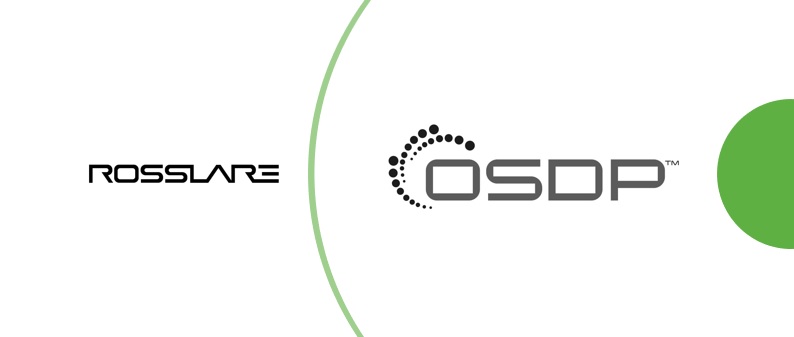OSDP (Open Supervised Device Protocol) is a communication standard for access control systems, developed by the Security Industry Association (SIA). It’s designed to provide a more secure and feature-rich alternative to older protocols, most notably Wiegand.
What is OSDP?
In a simple access control setup, you have a controller and a reader. The reader is the device you interact with (e.g., a card reader or keypad), and the controller is the “brain” that makes the decision to grant or deny access. OSDP defines the language these two devices use to communicate.
Unlike Wiegand, which is a one-way communication protocol, OSDP is bi-directional. This means the controller can not only receive data from the reader but also send information back to it. This two-way street unlocks a host of benefits.
Benefits for Customers Using Rosslare Controllers and Readers
When you combine OSDP-enabled readers and controllers from a company like Rosslare, you can leverage a more secure and capable access control system.
1. Enhanced Security
- AES-128 Encryption: OSDP supports AES-128 encryption for the communication channel between the reader and the controller. This makes it extremely difficult for an intruder to “eavesdrop” on the data being transmitted, preventing card cloning and other security breaches.
- Supervised Connections: OSDP constantly monitors the connection between the reader and the controller. If the connection is tampered with or cut, the controller will immediately detect it and trigger an alarm. This feature helps prevent “cut and run” attacks where an intruder disconnects the reader to bypass the system.
2. Advanced Functionality
- Two-Way Communication: The bi-directional nature of OSDP allows for a richer user experience. For example, a Rosslare controller can send messages to a reader’s display screen, providing user-friendly prompts or feedback like “Access Granted” or “Please Present Card Again.”
- Reader Configuration: OSDP-enabled readers are more intelligent and configurable. You can adjust reader settings, such as beep sounds, LED colors, and firmware updates, directly from the controller’s management software, such as Rosslare’s AxTraxNG. This eliminates the need to physically access each reader for configuration changes.
- Biometric and Smart Card Support: OSDP’s robust protocol is well-suited for handling complex data from modern credentials like biometric readers and secure smart cards (e.g., MIFARE DESFire EV1).
3. Simplified and Cost-Effective Installation
- Reduced Wiring: OSDP uses a two-wire RS-485 bus for communication, which is a significant improvement over the multi-wire Wiegand protocol. This simplifies installation, reduces cable costs, and allows for longer wire runs (up to 1000 meters in some cases).
- Daisy Chaining: You can “daisy chain” multiple OSDP readers on a single communication bus, which further simplifies the wiring, especially in multi-door installations.
How to Use OSDP with Rosslare Controllers and Readers
Using OSDP with Rosslare equipment typically involves a straightforward setup process:
- Select Compatible Devices: Ensure both your Rosslare controller (e.g., AC-825IP) and your readers are OSDP-compatible. Rosslare’s “Open to Secure” (O2S) and other newer readers are designed to work seamlessly with their controllers using the OSDP protocol.
- Wiring: Connect the OSDP-compatible reader to the controller’s RS-485 bus. You will typically use two twisted-pair, shielded cables for this connection.
- Configuration:
- Addressing: Each OSDP reader on the bus must be assigned a unique address, which is typically done via a DIP switch on the reader itself.
- Software Setup: In the Rosslare management software (such as AxTraxNG), you will need to configure the controller’s OSDP port and specify the addresses of the connected readers. This is also where you would enable features like OSDP Secure Channel.
- Termination: For proper communication on the RS-485 bus, a termination resistor (typically 120 ohms) needs to be installed at both ends of the cable run.

